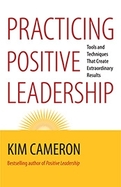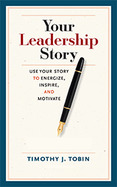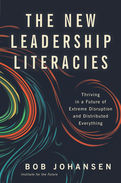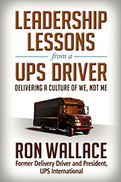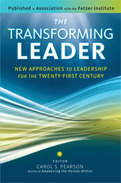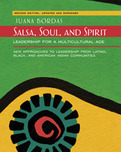Using story as both a metaphor and a process for self-development, Tobin offers activities and questions that help you better understand your own leadership and how others perceive it. What is the plot of your leadership story-your overall goals and purpose? Who are the main characters and what roles do they play? How have the settings of your story influenced it? What are the conflicts that you need to resolve to move toward the ending you intend?
But you have to share your story to make it an effective leadership tool. Tobin gives detailed advice on framing your message, finding ways to communicate it, and understanding the role others play in furthering that message.
If you don't tell your leadership story, other people will-and it may not be the story you want told. Taking control of your leadership story enables you to more consciously shape the impact you have in the world. You'll be better equipped to make decisions, choose actions that tell the story you want to tell, make stronger connections to those you lead, and ensure that you become the kind of leader you want to be.
It's too late to catch up, but it's a great time to leapfrog. Noted futurist Bob Johansen goes beyond skills and competencies to propose five new leadership literacies—combinations of disciplines, practices, and worldviews—that will be needed to thrive in a VUCA world of increasing volatility, uncertainty, complexity, and ambiguity. This book shows how to (1) forecast likely futures so you can “look back” and make sure you're prepared now for the changes to come, (2) use low-risk gaming spaces to work through your concerns about the future and hone your leadership skills, (3) lead shape-shifting organizations where you can't just tell people what to do, (4) be a dynamic presence even when you're not there in person, and (5) keep your personal energy high and transmit that energy throughout your organization.
This visionary book provides a vivid description of the ideal talent profile for future leaders. It is written for current, rising star, and aspiring leaders; talent scouts searching for leaders; and executive coaches seeking a fresh view of how leaders will need to prepare. To get ready for this future, we will all need new leadership literacies.
Just ask a driver!
Ron Wallace was a UPS delivery driver for six years before he began rising through the ranks, ultimately becoming president of UPS International. In other companies, that might be extraordinary, but at UPS it's par for the course. UPS has a unique corporate culture. It's like a family. Package loaders call executives by their first names and vice versa. The company almost always promotes from within. Lifetime employment is common. Most employees own UPS stock. Wallace credits the company's success—and his own—to its culture of “we, not me.” As he puts it, working at UPS gave him a PhD in teamwork.
Instead of writing a typical business memoir that celebrates the leader as celebrity, Wallace shares vivid stories that focus on the people he worked with, the challenges they overcame, and the simple principles and practices that make up the UPS way. He exhorts his readers to grow their people, not just their business plans. The leadership style described in this book is simple and direct—and it works. The straightforward and easy-to-understand lessons provide a blueprint for an individual or company to build on past successes and adapt to future challenges. This is a must-read for anyone aspiring to become a great leader.
Outlines a new leadership approach tailored to the realities of the 21st Century.
No organizational leaders can succeed in today’s fast evolving and highly connected world on their own. To succeed, today’s leaders must not only optimize all their own faculties—mental sharpness, emotional depth, imagination, and creativity—but also utilize the full capacities of those around them in a collaborative and creative manner. The prestigious contributors to this volume draw on psychology, sociology, neuroscience, social networking theory, organizational change theory, myths and traditions, and actual experiences to discover how leaders today achieve transformational results. The Transforming Leader offers an overview of what transformational leadership is, how it works, and how it is evolving. In doing so it reframes the challenge of leading in today’s interdependent, unpredictable world.-
Outlines a new leadership approach tailored to the realities of the twenty-first century
-
Features chapters by such leading authors as Matthew Fox, Diana Whitney, and Alan Briskin
-
Edited and annotated by the author of the bestselling The Hero Within
The traditional model of the heroic leader single-handedly piloting the organization was always something of a myth, but it is especially unrealistic now. We live in a complex, fast-evolving, highly connected world. There is simply too much for a single person to keep track of or to address successfully. Leaders today must not only optimize all their own facultiesmind, body, and spiritthey must harvest the full capacities of those around them.
To discover what leadership models are working now, the prestigious Fetzer Institute, along with the University of Marylands School of Public Policy, and the International Leadership Association, brought together an impressive, interdisciplinary group of scholars and practitioners. The group drew on psychology, sociology, neuroscience, organizational change theory, myths and wisdom traditions, social networking theory, and the actual experiences of successful leaders to discover how leaders today achieve transformational results.
The first part of the book offers an overview of what transformational leadership is, how it works, and how it is evolving. The second part shows readers how to increase cognitive complexity, link up their conscious and unconscious minds, and lead in ways that connect mind, heart, and spirit. The third part describes ways of leading groups to harvest collective wisdom and promote coordinated performance in the service of transformational ends. The conclusion explores how transformational communication can anchor new learnings so that they become habitual.
Overall, The Transforming Leader reframes the challenge of leading in todays interdependent, unpredictable world. Its message is that if we update our thinking, enhance the quality of our being, deepen our sense of relatedness with the ecology of our natural and social worlds, and practice transformational communication, things no longer have to be so hard.
A much-needed revised edition of the only book that presents a multicultural leadership model integrating eight practices from African-American, American Indian, and Latino communities—an alternative to the heavily or exclusively Anglo-American based concepts of leadership presented by most leadership books. The first edition has sold 20,000 copies, was the winner of the International Latino Book Award, Best Business Book, and was on the Rocky Mountain News Bestseller list. NEW EDITION, REVISED AND UPDATED One of America’s historic strengths is the ability to incorporate aspects from many different cultures to create a stronger whole. Our music, literature, sports, architecture, food, and fashion have all benefitted. But current leadership approaches are overwhelmingly written by White males and remain distressingly Eurocentric. Juana Bordas has set out to change this. In this influential book, she shows how incorporating Latino, Black, and American Indian approaches can enrich leadership and offers a more viable model for our expanding multicultural society.
-
Identifies nine core leadership principles common to Latino, African American, and American Indian cultures
-
Incorporates these principles into a multicultural leadership model that is uniquely suited to our changing demographics
-
Combines personal reflections, interviews with community leaders, historical background, and contemporary case examples
One of America's historic strengths has been our ability to incorporate aspects from many different cultures to create a stronger whole. Our music, literature, language, architecture, food, fashion, and more have all benefitted. But leadership approaches have remained distressingly Eurocentric.
Juana Bordas set out to change this in the first edition of this influential book. She showed that incorporating Latino, African American, and American Indian approaches to leadership into the mainstream can strengthen leadership practices and better inspire today's ethnically rich workforce.
This message has only become more urgent. The 2010 census revealed that in four decades minorities will constitute over 50 percent of the populationand in one decade a majority of Americans under age eighteen will be nonwhite. More than ever we need a leadership model htat resonates with our country's growing diversity. Bordas incorporates this latest census data into this second edition, which now identifies ninerather than the previous edition's eightcore leadership principles common to all three cultures. The new principle deals with intergenerational leadership, of vital importance now that many organiziations will have four generations working side by side.
Using a lively blend of personal reflections, interviews with leaders from each community, historical background, and insightful analysis, Bordas illustrates the creative ways these principles have been put into practice in communities of color. The multicultural leadership model developed in this book offers a more flexible and inclusive way to lead and a new vision of the role of the leader in organizations and in our increasingly multicultural world.


